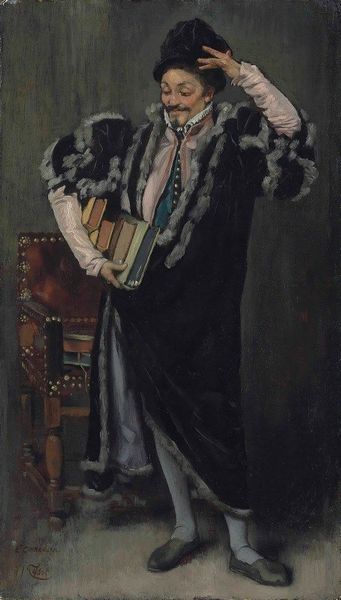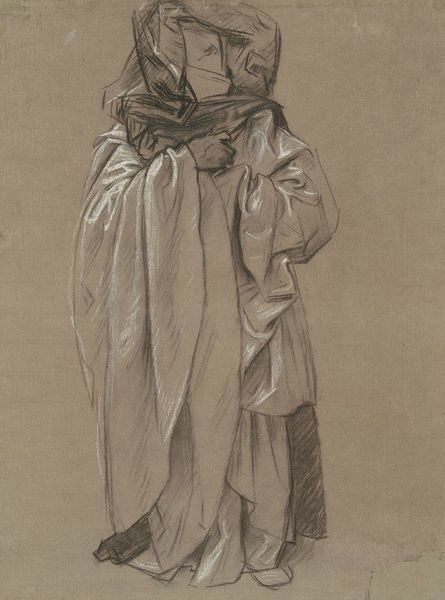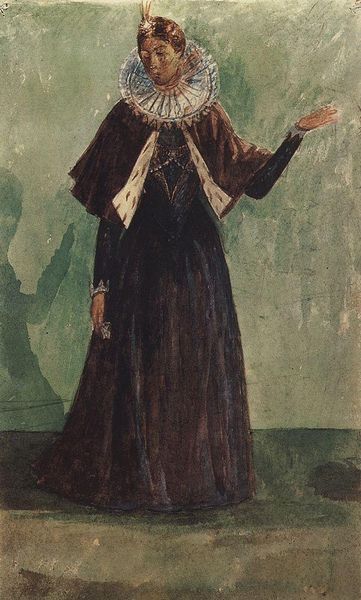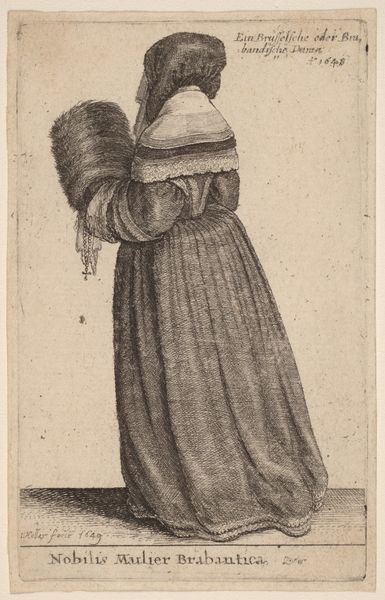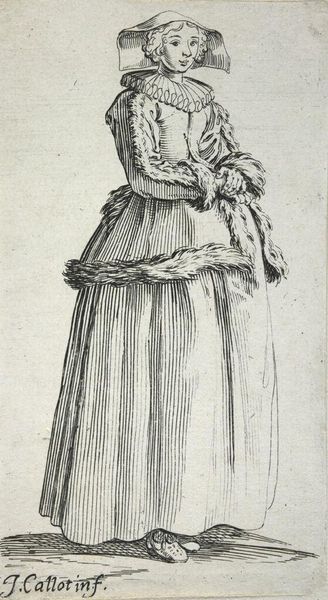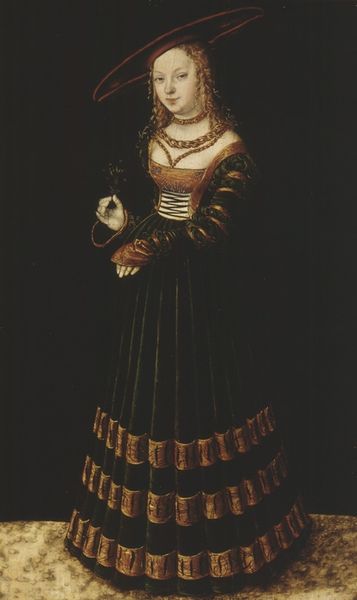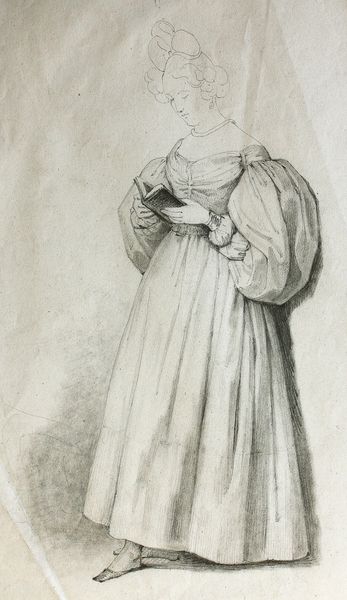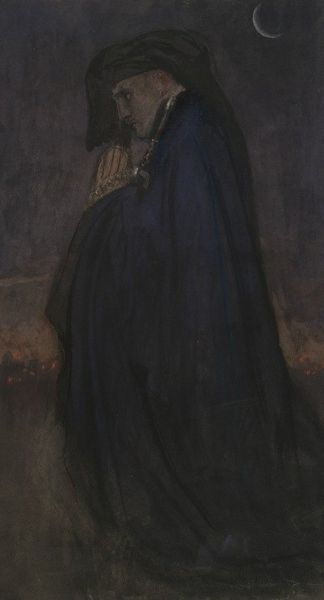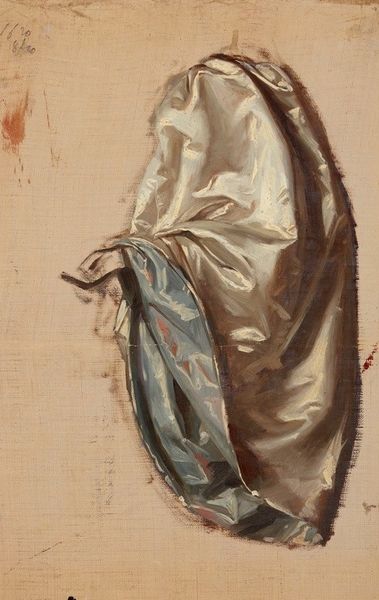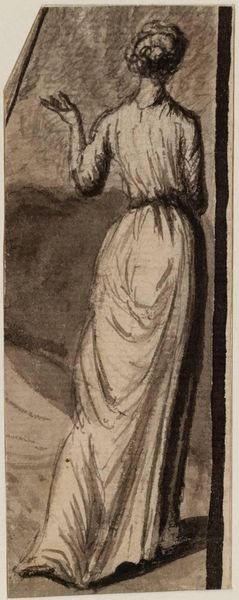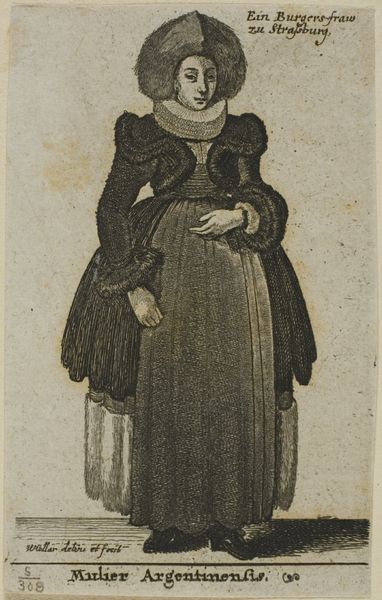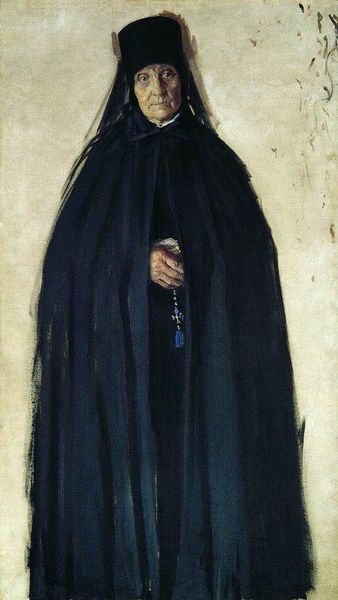
painting, oil-paint
#
painting
#
oil-paint
#
figuration
#
oil painting
Copyright: Public domain
Curator: This painting, by George Harvey, is titled "Weel Happet Infant," and seems to be rendered in oil paint. It has a remarkable energy. Editor: The brushstrokes certainly convey a sense of spontaneity, don't they? And that earthy, muted palette gives it an interesting mood – almost melancholic, despite the title's implications. Curator: It’s an evocative piece. The composition is essentially a study in contrasting forms. We have the softer, curved lines of the child's garment against the rather undefined plane of the background. Note, in particular, the way the garment bunches and flows. Editor: The dress or coat is interesting – there's an almost architectural quality to its construction. Those ruffled edges soften it a bit though. And the tie at the back suggests a level of care, even domesticity. Do you think the phrase "weel happet" – well wrapped or covered – is trying to tell us something beyond just physical warmth? Curator: Perhaps the painting seeks to portray the broader sense of security or protection the infant might experience. Look how the forms of the fabric envelope the child, creating a kind of shield from the outside world, almost in a metaphorical way. Editor: Right, but it's also possible there's a commentary here on the constraints placed upon women and children by societal expectations – look at how tightly the clothing seems to bind the child's form. And from behind, with their identity mostly hidden, they seem completely defined by the clothes, without a voice of their own. Curator: A provocative reading. The dynamism of the brushstrokes, however, does imbue the child’s form with a sense of latent power that belies the perceived restriction, so, for me, the analysis doesn't completely add up. Editor: An important note. Ultimately, it leaves us pondering childhood innocence and vulnerability through its symbols. Curator: Yes. Its structural components invite us to contemplate not just what is represented but also how such representations can generate multiple meanings depending on where you are standing as an observer.
Comments
No comments
Be the first to comment and join the conversation on the ultimate creative platform.
